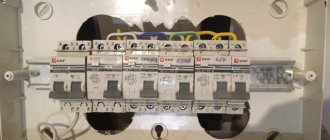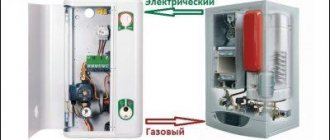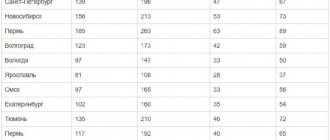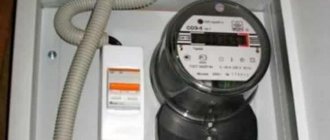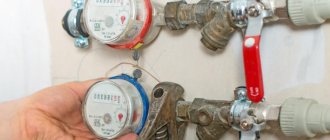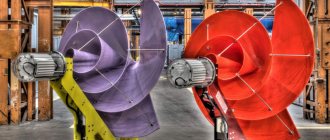Maintaining a comfortable ambient temperature is sometimes impossible to achieve without additional equipment. This issue is especially relevant in the off-season, when the heating season has not yet begun or, conversely, has already ended. An electric heater is the simplest solution to the problem.
It will help organize additional or main heating of an apartment, house, cottage, office, as well as a garage, work space, shopping pavilion and other premises.
There is a huge range of heaters on the market. Based on the principle of operation, the following types of these devices can be distinguished:
- Convector.
- Oily.
- Infrared.
- Convective-infrared.
- Fan heater (heat gun).
The most important characteristics of any type of heater are power and efficiency. The higher the maximum power, the faster and more intense the heating occurs. The area on which it is advisable to use one or another model also depends on this. However, the level of power consumption directly depends on this parameter. Devices that consume no more than 1 kW/hour at the most intensive operating mode can be considered economical.
What to look for when choosing a heater:
- Power and the ability to adjust it.
The optimal ratio is considered to be 100 W per 1 m2 with standard ceiling heights. - The presence of a thermostat.
This device is designed to maintain a set temperature. There are mechanical and electronic. The first ones are more reliable, and the second ones are more accurate. - Type of instalation.
For some models of convector, infrared and convection-infrared heaters, not only floor installation is possible, but also wall and ceiling installation. This is especially true for small rooms, when it is important to preserve useful space. - Control type:
mechanical, electronic, touch. - Safety.
The advantage is the presence of automatic shutdown functions when tipping over or overheating. - Presence of a timer.
An optional, but at the same time very useful feature. Allows you to turn off the device after a specified time. - Extra options.
These include the ability to control the device from a smartphone, a built-in ionizer, various anti-corrosion and vandal-proof coatings on the case, and child protection. Selected depending on the requirements of a particular user.
We present the rating of economical heaters 2022. The best 12 models that were selected by our experts based on user reviews and ratings.
| Rating (2021) | Prices, ₽ | A country |
| The best convector economical heaters | ||
| 1. Electrolux ECH/AG-500 PE | from 6600₽ | China |
| 2. Ballu BEC/ETMR-500 | from 3600₽ | Russia |
| 3. Resanta OK-2000 | from 5200₽ | China |
| The best infrared economical heaters | ||
| 1. Hyundai H-HC2-06-UI696 | from 2000₽ | Russia |
| 2. Nikaten NT 300 | from 3500₽ | Russia |
| 3. Ballu BIH-APL-0.6 | from 2600₽ | Russia |
| The best infrared-convective economical heaters | ||
| 1. Electrolux EIH/AG2-1000E | from 8600₽ | China |
| 2. Ballu BIHP/R-2000 | from 9800₽ | China |
| 3. STN NEB-M-NSt 0.7 (mChk/mBq) | from 7000₽ | Russia |
| The best oil-efficient heaters | ||
| 1. Electrolux EOH/M-5105N | from 4000₽ | China |
| 2. Ballu Comfort BOH/CM-05 | from 3000₽ | China |
| 3. Resanta OMM-7N | from 3200₽ | China |
Introduction
With the onset of golden autumn, when utility workers have not yet woken up, the temperature in our apartments sometimes drops to indecent levels.
In such an extremely unpleasant situation, it is necessary to act somehow. Which home heater is the most economical and inexpensive? But what to do if electricity bills are getting higher every year, as are prices in stores, how can you escape from this terrible cold? The only option left is to choose the most economical, inexpensive, efficient heater with the highest efficiency, and we will try to help you in this matter.
Infrared heating
Air, with the help of infrared heaters, is not heated directly, but through heat transfer from the heated surface. In fact, such heaters use the principle of sunlight, which heats the soil, and from it the heat disperses into the atmosphere.
The use of such devices is not only practical and cost-effective, but also optimally meets the requirements of the initial period of operation of the house - no extreme temperatures, which means no crumbling walls. The disadvantage of such equipment may be its relatively high cost. However, the system pays for itself in about 3 years.
Types of heaters
Today on the market there are a great variety of different electric heating systems, from simple small heaters to complex systems of heated floors, walls or ceilings with remote control coupled with smart home systems, but all of them can be divided into just a few types:
- Electric (fan heaters)
- Electric fireplaces
- Oil radiators
- Convectors or convection heaters
- Quartz panels
- Infrared. They differ by type of heating element: halogen, carbon, quartz, micathermic (best efficiency)
An example of a real system with an intelligent control circuit for electric heating at home
NOBO, a leading European manufacturer of convectors, produces two compatible systems for “smart” control of electrical appliances. Including “warm floors” (via a thermostat) and any other household appliances that are connected to the network (via a panel, a “break” in the circuit or turning on/off sockets). To do this, they produce special thermostats, socket receivers and hidden-mounted relay receivers.
Using such a system, you can monitor and manage the operation of up to 100 devices or group zones. And thermostats of the 700 series provide 4 operating modes for convectors: comfortable, economical, non-freezing (air temperature 7°C) and “off”. According to the manufacturer, the flexibility of such a control system for convectors and heated floors allows you to save up to 25% on electric heating at home.
One of two control schemes for a multi-zone electrical system Source stroydoma74.ru
Principle of operation
First, you need to remember the principle of operation of heaters. Fan heaters are considered the simplest devices; heating occurs due to the distribution of hot air by a fan through an incandescent lamp; the efficiency is quite low.
The principle of electric fireplaces is similar to fan heaters; as a rule, such devices are stationary and have rather a decorative component; the efficiency of such devices is at an average level.
In oil radiators, heat is distributed by heating the oil inside the heater using heating elements. Heating takes quite a long time, but cooling is noticeably slower. Due to the smooth heating of the oil inside the radiator grille, such batteries cannot be called economical, and later you will find out why, the efficiency is low. Even in some European countries they are assigned class C for energy efficiency.
Convectors operate on the principle of convection by circulating air inside the room through the heater. Heavy cold air falls down, is captured by the convector, heats up and rises, and as it rises it displaces the cold air. The efficiency of such devices is quite high.
Quartz panels are an electric heating element enclosed between artificial stone panels; the efficiency is average. First, energy is expended on heating the plates and further slow heat transfer occurs from these plates.
Infrared heaters are equipped with special emitters (lamps) that emit infrared rays that are invisible to humans and primarily heat the surrounding objects, rather than the air around them. They differ in the type of lamp emitters : halogen, carbon, quartz. Such devices are more economical than oil and electric fireplaces. The efficiency is quite high, see table below.
Infrared with micathermic heating elements have appeared quite recently. This is an innovative type of infrared heaters with the highest efficiency. Unlike conventional infrared heaters, in such heaters the source of thermal energy is a special design made of Micatherm panels, which distributes invisible, safe infrared radiation. As a result of exposure to such radiation, surrounding objects, rather than the environment, heat up.
Fan heater
In fan heaters, air is heated using a hot electric coil and a fan that drives air through it.
The room gets warm quite quickly, but when you turn it off it also gets cold quickly.
Since the coil is very hot, this type of heater dries out the air and burns house dust.
As a result, specific odors appear. Therefore, in recent years, models with a ceramic heating element that are free of these disadvantages have become widespread.
In addition, the fan heater makes quite a noticeable noise during operation. So you won't get much sleep at night with him.
But its obvious advantages are its compact size and low cost.
Efficiency of the main types of home heaters
Everyone knows what efficiency is, this is the difference between the energy expended and the energy produced. When calculating the coefficient, we tried to provide the most detailed answer in tabular form . Since, in addition to the energy component, there are also financial costs for the purchase of the device itself, electricity costs, the calculation is made taking into account these factors.
The table shows the average values obtained from tests of various types of heaters (thanks to one well-known store for providing testing equipment). The cost for 1 kW of energy is 4 rubles. Heating took place for 1 hour in a furnished room of 18 square meters with an initial temperature of 22 degrees C. Heater power 1500 W. Control type – electronic.
| View | Average price, r | Declared maximum power, W | Temperature change over 1 hour, gr. WITH | KW consumed according to the meter | Cost of consumed electricity, p |
| Fan heater | 1250 | 1500 | +3,9 | 1,69 | 6,76 |
| Oil | 3200 | 1500 | +5,1 | 1,74 | 6,96 |
| Convector | 3540 | 1500 | +6,2 | 1,52 | 6,08 |
| Infrared | 3580 | 1500 | +6,1 | 1,22 | 4,88 |
| Micathermic | 7800 | 1500 | +7,0 | 1,24 | 4,96 |
The obtained figures are approximate, since many important factors influencing the result are not taken into account, such as: a single brand of the manufacturer, humidity in the room, the model of the heater itself, direction, voltage in the electrical circuit, etc.
But nevertheless, the figures turned out to be the following; the highest efficiency was obtained from convectors, infrared, and micathermic heaters. The fan heater was barely able to heat the room by 4 degrees.
The oil radiator heated the room quite well; after the end of the experiment, the room continued to heat up and remained heated longer than others, so it should not be written off due to high power consumption.
In addition to the electronic type of control, there are also mechanical (outdated) and inverter (the most modern and economical). If we compare the electricity consumption of similar heaters with different control modules, the following figures come out:
mechanical - 0% savings, the electronic unit allows you to save 30% in contrast to the mechanical one, the inverter control unit is the most economical, this method of thermoregulation allows you to save up to 80% of electricity compared to mechanical regulators.
Inverter thermostat
The cost of heaters with inverter units can vary from 8,000 to 30,000 rubles. In the long term, as a rule, such costs pay off. More details in the video:
About the fuel combustion process
The progress of combustion of the main fuel in heating devices determines their operating mode and operating conditions. Thus, gas boilers and water heaters are specially equipped to operate in autonomous mode. It is the automation that maintains a certain flame burning force, water pressure, and ensures the removal of exhaust gases. They are equipped with several degrees of protection, which makes work safe.
Liquid fuel heaters are also equipped with automation , ensuring their reliability. But such devices differ in that they emit harmful emissions into the atmosphere.
Attention! Heating devices operating on solid fuel require the constant presence of maintenance personnel. After all, this requires regular control over the fuel supply and its combustion.
To create a comfortable temperature in wooden houses, the following types of safe heaters are considered the most popular:
- oil radiators;
- fan heaters;
- convectors;
- infrared emitters.
Photo 1. An oil heater installed in a wooden house can create a comfortable temperature.
technical characteristics will help you choose an acceptable option .
Why some heaters are more economical than others, pros and cons
The fact is that different heaters use different methods of heating the room, some use heating elements, others use infrared radiation and oil coolants.
The primary most important factor influencing savings is the correct selection of a heater of the required power for a given room area. For example, if you try to heat 400 m2 with a fan heater for 900 rubles, you may not only not heat anything, but also get a good electricity bill at the end of the month , see the table below .
| Room area, sq.m | Power (Watts, W) |
| 5,0-6,0 | 500-750 |
| 7,0-9,0 | 750-1000 |
| 10,0-12,0 | 1000-1250 |
| 12,0-15,0 | 1250-1500 |
| 15,0-18,0 | 1500-1750 |
| 18,0-25,0 | 1750-2000 |
| 25,0-30,0 | 2000-2500 |
| 30,0-35,0 | 2500-2900 |
Important! If you choose a heater as a non-main source of heat, for example, for the spring-autumn period. One order of magnitude less choice is enough For example, 30sq.m-2000W . Another situation is if the main heating source is not enough for you, for this you need to make simple calculations and acquire a suitable energy-saving heater designed for a smaller area.
Also , do not forget that not all heating systems distribute heat evenly around themselves, there are directional, all-round, there are floor, wall, ceiling, they all have their pros and cons. Let's look at the advantages and disadvantages of the most popular ones:
Fan heaters
- pros
Mobility, democracy, fairly quick heating of the room
- minuses
Noisy, dry the air, raise dust, burn oxygen, cannot be left unattended, average efficiency
Oily
- pros
Slow cooling, silent operation, thermostat, overheating protection
- minuses
Slow heating, low efficiency, body heating
Convectors
- pros
Silence, safe heating of the case, thermostat, high efficiency
- minuses
They dry out the air, burn out oxygen, and become clogged with dust.
Infrared
- pros
Quiet, economical, do not dry out or burn oxygen, fast heating
- minuses
Expensive
Micathermic
- pros
High efficiency, maintaining a uniform microclimate
- minuses
Increased sensitivity to power overloads, price
This list shows only the main advantages and disadvantages. When choosing a heater, you must also pay attention to the manufacturer’s brand, warranty period, its own unique properties, energy efficiency class, ease of transportation, safety for people, sensitivity to temperature changes, cord length, appearance.
Correct Application
Ceiling models are the easiest to care for: you just need to periodically wipe off the dust.
It is correct to apply wall and floor versions of panel type according to the following criteria:
- They cannot be covered with anything on top.
- Their front panel should be at least a meter away from sockets and other objects.
- In rooms with high humidity, equipment with a minimum protection class of IP24 is installed.
Radiation from the EUT is not considered particularly harmful to humans. The main thing is not to be under their direct influence for a long time: there is a risk of heat stroke.
And if you place a device with a power of 150 W per 1 sq.m. indoors, you can seriously disrupt the immune mechanism.
The best inexpensive, economical heaters according to experts, TOP-15
When choosing a heater, it is often difficult to understand just by looking at it in a store whether it is good or not, and testing for functionality is also not enough. Before going to the store, it is important to know exactly which of the heaters will actually cope with its task, and which one should not be considered. For this purpose, we have compiled a rating of the best and inexpensive heaters, suitable for a home, cottage or apartment, for a room of 20 square meters, with a power of 1000 to 2000 W. This rating is based on expert opinion and experience of use by other users. When choosing, also pay additional attention to reviews from other users and the cost in retail stores.
Electric (fan heaters)
Electrolux EFH/S-1115 1500 W (1100 – 4000 RUR)
Zanussi ZFH/C-408 1500 W (1450 – 4000 RUR)
Ballu BFH/C-31 1500 W (790 – 3600 RUR)
Oil radiators
Ballu Classic BOH/CL-09 2000 W (2800 – 3300 RUR)
Electrolux EOH/M-6209 2000 W (3600 – 4900 RUR)
Timberk TOR 21.1507 BC/BCL 1500 W (3400 – 3950 RUR)
Convectors or convection heaters
Ballu Enzo BEC/EZER-1500 1500 W (4230 – 4560 RUR)
Electrolux ECH/AG2-1500 T 1500 W (3580 – 3950 RUR)
Electrolux ECH/AS-1500 ER 1500 W (4500 – 5800 RUR)
Infrared
Ballu BIH-LW-1.5 1500 W (2390 – 2580 RUR)
Almac IK11 1000 W (3650 – 3890 RUR)
Timberk TCH A1N 1000 1000 W (4250 – 4680 RUR)
Infrared micathermic
Polaris PMH 2095 2000 W (RUB 7250 -8560)
Polaris PMH 2007RCD 2000 W (6950 – 8890 RUR)
De'Longhi HMP 1000 1000 W (6590 – 7250 RUR)
Selection of heating component
When choosing an IO, you should take into account their differences in the shell of the heating component. Types of infrared heaters are often classified based on the heater. It can be metal, ceramic or quartz.
A halogen element for the home is a lamp that produces waves in the infrared spectrum. There is a glowing filament inside it. As a rule, it is made of tungsten or hydrocarbon fiber. When the filament heats up, energy is generated. And it is transmitted through the lamp tube.
The radiation from all such lamps has a golden hue. It is harmful to the eyes. Therefore, the lamp is often coated with a protective compound. The radiation of the halogen component itself poses a lot of harm to human health. Reason: short waves emanate from it. Therefore, experts advise choosing devices that do not contain such a component for regular use.
The carbon element is a quartz tube. There is a vacuum inside it. It contains a carbon spiral. The advantages of this component for an apartment:
- high heating dynamics;
- powerful efficiency.
- short service life (about 2 years);
- absorbs a lot of electricity (1 - 1.5 kW);
- a reddish glow emanates, spoiling the eyes;
- dangerous for allergy sufferers.
The ceramic shell component has a powerful defense. There is no glow coming from it when working. Other advantages, for example, for a summer residence:
- minimum service life – 3 years;
- absorbs 50 – 2000 W;
- high strength.
- solid prices;
- slow heating and cooling.
The tubular metal element has a similar shape to the ceramic component. But its cost is higher. And the advantages are:
- good, reliable work;
- convenience at home,
Cons (besides price):
- small cracks during operation.
The reason for the crackling noises is the temperature differences between the spiral and the housing: it is steel, it is aluminum.
Warm floor or heater, which is better and more economical? Video
Many people wonder what is better: an energy-saving heater or a heated floor system; this topic is especially relevant for owners of private houses or residents of the first floors of multi-story buildings.
So, what is a heated floor ? It is a heating system that heats a room from bottom to top, from floor to ceiling. Electric panels (mats, films, amorphous tapes) or hydraulic systems are used as heaters; accordingly, the heating principle is also different, infrared and convection. The system is mounted under various floor coverings, tiles, laminate, linoleum, PVC tiles, concrete.
Like all heaters, heated floors have their advantages and disadvantages, which you should pay attention to in order to understand what is best for the room. If we compare it with convection, the heat from the radiator rises up, cools down at the ceiling and falls down, and so on in a circle, therefore, in the upper part of the room it is much warmer than in the lower part, and in order to increase the heat in the area of the feet, it is necessary to increase the power of the radiator.
Unlike radiators, heated floors distribute heat over a larger area of the room evenly on the lower surface, thanks to this arrangement, savings on coolant costs , the feeling of warmth in the house increases by an average of 2 - 3 degrees C, and energy savings reach 15-20% compared to radiators. in more detail .
The disadvantages of heated floors include a long heating and cooling period. As the outside temperature changes, the indoor temperature does not always have time to change quickly. In order to install heated floors, it is necessary to rebuild the floor covering or provide for it in advance when renovating or building a house.
Important! The use of MDF and chipboard furniture can lead to the release of harmful substances from the material.
So which is more economical? When choosing heaters, you should definitely pay attention to the underfloor heating system. The best use case is combined heating systems, heated floors where needed in conjunction with radiators.
In case of a long period of low temperatures outside the window, the use of heated floors is certainly more profitable than wall heaters and will, over time, pay for the costs of installation and screeding. During short-term cold snaps, a local expensive or cheap heater is better suited.
Room area and device power
First of all, you need to decide what area you need to heat. The device of what power you need depends on this. How to calculate this power?
There is a simple and reliable formula that is suitable for all types of heaters except infrared.
For every square meter of a room with a standard ceiling height, it is advisable to have at least 100W of power.
For an infrared heater, there is an unspoken rule that 100W per 1m2 of area is its maximum power, not its minimum.
To the resulting value you need to add 200W for each window.
It follows from this that, for example, one room with an area of 13 m2 will be quite effectively heated by a model of 1.3 kW + 0.2 kW = 1.5 kW.
What if your ceiling height is 3m or more? Then use a slightly different calculation. Multiply the total area of the room by the actual ceiling height and divide this value by an average factor of 30. Next, also add 0.2 kW per window.
Of course, according to calculations, you can choose a less powerful device, especially for apartments where there is already main heating (central or boiler).
But given the constant heat loss and the fact that it will take longer to warm up the room, it’s better to play it safe. Devices with several heating stages are ideal. The more there are, the better.
Moreover, when the set temperature is reached, the built-in thermostat must turn off the device, no matter what level it is at. And when it decreases, turn it on again. Thereby significantly saving energy.
And also, a more powerful heater, when operated in “half” mode, will serve you much longer than its counterparts selected back to back.
And the area of the sections for heat distribution is higher - hence faster warming up.
Induction boilers
In induction boilers there are two circuits at once: one heat exchanger and the other magnetic. In a magnetic type circuit there is a coil that creates a magnetic field, and due to this the coolant is heated. The operating principle of such a circuit is very similar to the operating principle of an induction hob. The heat exchange circuit is necessary for temperature redistribution to occur in it. After this, the coolant will heat up and begin to flow into the heating system of the house.
Induction boiler
The most important advantage of boilers of this type is the safety of their use. This can be explained by the fact that the boilers completely lack heating components.
Among the disadvantages of such devices are their high price, as well as the rather complex smooth adjustment of thermal conditions.
Consumer Reviews
Vadim:
“We use IR heaters from Noirot. Completely satisfied. The panel emitter is very economical, the main thing is that the child is safe.”
Catherine:
“We have been using Purmo convectors for several years. We are completely satisfied with the quality. There is a slight noise during operation, but it does not cause discomfort.”
There are many types of climate control equipment on the market. It can be difficult to choose. To choose a safe device, listen to the experts. Additionally, read reviews about the product and company.
Average score of ratings is more than 0
Share link
Comments There are no comments yet, but you could be the first...
